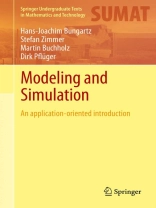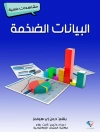Die Autoren führen auf anschauliche und systematische Weise in die mathematische und informatische Modellierung sowie in die Simulation als universelle Methodik ein. Es geht um Klassen von Modellen und um die Vielfalt an Beschreibungsarten. Aber es geht immer auch darum, wie aus Modellen konkrete Simulationsergebnisse gewonnen werden können. Nach einem kompakten Repetitorium zum benötigten mathematischen Apparat wird das Konzept anhand von Szenarien u. a. aus den Bereichen „Spielen – entscheiden – planen’ und „Physik im Rechner’ umgesetzt.
表中的内容
1 Introduction.- 2 The necessary instruments in brief.- Part I Playing – deciding – planning: A modeling warm-up.- 3 Game theory.- 4 Group decisions.- 5 Schedules.- 6 Wiener processes.- Part II Traffic on highways and data highways: A trip through the simulation pipeline.- 7 Macroscopic simulation of traffic.- 8 Microscopic simulation of traffic.- 9 Stochastic traffic simulations.- Part III Dynamic systems: Cause, effect and interaction.- 10 Population dynamics.- 11 Controllers.- 12 Chaos theory.- Part IV Physics on the computer: The switch to number crunchers.- 13 Molecular dynamics.- 14 Thermal conduction.- 15 Fluid mechanics.- 16 Global illumination in computer graphics.- Closing remarks.- Bibliography.- Index.
关于作者
Hans-Joachim Bungartz: Professor of informatics and mathematics at TUM, chair of scientific computing; long-term experience in teaching for programs in informatics, mathematics, physics, and engineering; responsible of CSE graduate programs at TUM and Bavaria-wide. Dirk Pflüger and Stefan Zimmer: are both members of the Chair of Simulation of Large Systems, Institute for Parallel and Distributed Systems, at the University of Stuttgart; their teaching includes respective courses in the informatics and software engineering programs and within the cluster of excellence Simulation Technology.Martin Buchholz: works at Realtime Technology AG (RTT AG) on distributed software systems for realtime visualization.












